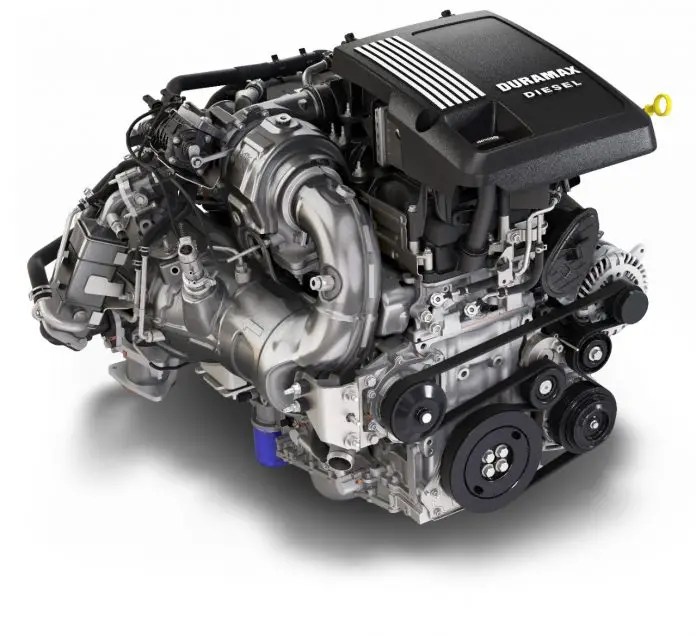Duramax 3.0L I6 Turbo-Diesel: Engine Issues and Solutions
So, you're thinking about the Duramax 3.0L turbo-diesel I6? It's a powerful and efficient engine, promising a blend of muscle and fuel economy. But like any engine, it has its quirks. Before you take the plunge, let's dive into the potential problems you might encounter with the Duramax 3.0L I6 turbo diesel and how to tackle them.
The Duramax 3.0L I6 isn't just any engine; it's a sophisticated piece of machinery. Understanding its potential weaknesses can save you headaches and costly repairs down the road. We'll explore everything from common issues to preventative maintenance, ensuring you're prepared for the long haul.
One of the most discussed aspects of the Duramax 3.0L turbo-diesel I6 is its reliability. While generally robust, some owners have reported problems. It's crucial to separate internet chatter from genuine concerns. We'll examine documented issues, offering a clear picture of what to expect.
This isn't about scaring you away from the Duramax 3.0L. It's about empowering you with knowledge. Knowing the potential problems means you can make informed decisions about maintenance and repairs, maximizing your engine's lifespan and performance.
Think of this as your guide to navigating the world of the Duramax 3.0L I6. We'll cover the good, the bad, and the ugly, giving you the tools to keep this powerful engine running smoothly for years to come.
General Motors introduced the LM2 Duramax 3.0L I6 turbo-diesel engine as a more efficient alternative to larger displacement engines. It was designed for trucks and SUVs, offering a balance of power and fuel economy. One reported issue has been with the fuel system, specifically related to fuel injector failures. Another potential concern revolves around the emissions system, particularly the diesel particulate filter (DPF).
Understanding the Duramax 3.0L's history is crucial to appreciating its evolution. From its initial design to subsequent updates, GM has continually refined this engine. Staying informed about these changes can help you anticipate potential issues and choose the right maintenance strategies.
A diesel particulate filter (DPF) is a device designed to trap soot particles from the exhaust gases. Regular regeneration cycles burn off these particles, but issues can arise if the regeneration process is interrupted or if the DPF becomes excessively clogged. For example, frequent short trips can prevent the DPF from reaching optimal regeneration temperatures.
While challenges exist, the Duramax 3.0L offers benefits. Its inline-six configuration contributes to smooth operation. The turbocharger provides ample low-end torque, beneficial for towing and hauling. And, of course, the diesel engine inherently offers better fuel economy compared to its gasoline counterparts.
Advantages and Disadvantages of the Duramax 3.0L I6
| Advantages | Disadvantages |
|---|---|
| Fuel Efficiency | Potential DPF Issues |
| High Torque | Fuel Injector Concerns |
| Smooth Operation | Complex Emissions System |
Best Practices for Maintaining your Duramax 3.0L:
1. Use high-quality diesel fuel and fuel additives.
2. Adhere to the recommended oil change intervals.
3. Ensure the DPF regeneration cycle completes uninterrupted.
4. Monitor the engine's coolant levels and address any leaks promptly.
5. Regularly inspect the fuel system for leaks or damage.
Frequently Asked Questions:
1. What is the typical lifespan of a Duramax 3.0L? With proper maintenance, these engines can last hundreds of thousands of miles.
2. How can I prevent DPF issues? Avoid frequent short trips and ensure the regeneration cycle completes.
3. What are the signs of a failing fuel injector? Symptoms might include rough idling, misfires, or reduced fuel economy.
4. Are there aftermarket performance upgrades available? Yes, various upgrades exist to enhance power and efficiency.
5. What type of oil is recommended for the Duramax 3.0L? Consult your owner's manual for the specific oil specifications.
6. How often should the fuel filter be replaced? Refer to the manufacturer's recommendations for fuel filter replacement intervals.
7. What are common causes of coolant leaks? Leaks can originate from hoses, the radiator, or the water pump.
8. How can I monitor the DPF regeneration cycle? Some vehicles have a DPF regeneration indicator on the dashboard.
Tips and Tricks: Consider using a fuel additive designed for diesel engines to help prevent fuel system issues. Monitoring your engine's performance and addressing any unusual noises or vibrations promptly can prevent minor problems from escalating.
In conclusion, the Duramax 3.0L I6 turbo-diesel engine offers a compelling blend of power and efficiency. However, like any complex piece of machinery, it’s essential to be aware of its potential issues. By understanding the common problems, such as fuel injector failures and DPF issues, and adopting preventative maintenance practices, you can maximize the lifespan and performance of your engine. Regular maintenance, using quality fuel and additives, and addressing issues promptly can help you avoid costly repairs and enjoy the benefits of this powerful and efficient engine for years to come. Don't let fear of potential problems deter you from experiencing the capabilities of the Duramax 3.0L. With the right knowledge and proactive approach, you can keep this engine running smoothly and reliably on any adventure.
Escape to the hills unveiling cebus busay camping scene
Athens on a budget epic sights without the epic price tag
Duramax 30 diesel issues glitches and headaches get the real scoop














